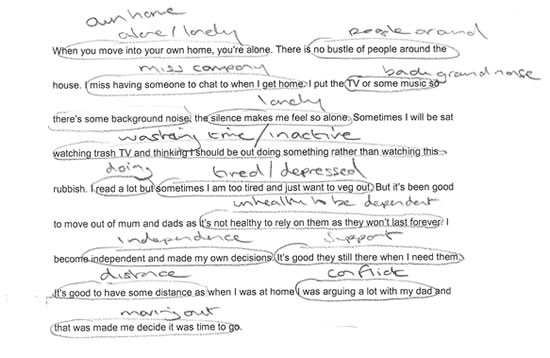4 Ways To Spot Bad Research
Post on: 10 Май, 2015 No Comment

Article Highlights:
- Insight into why your brand is not selected can be more valuable than insight into why people are already buying it.
- The stated importance of brand attributes is simply not sufficiently valid.
- Make sure the researchers helping you understand your business so that they make their findings and recommendations actionable.
Let’s talk about using research to support branding decisions. Sometime I hear a familiar refrain: “We’re already doing that.” Of course you are. If a company believes in branding enough to have a CMO and brand managers, it isn’t going to hamstring them by operating completely in the dark.
But investing in research and investing in the right research are two different things. While most research is valuable, unfortunately some simply isn’t. Following are four ways to spot poor research—before it leads you to flawed brand decisions.
1. Researchers can talk to the wrong people: Some research looks exclusively at the existing customers of your brand; this is too narrow. If you want to understand how decision makers choose between your brand and its competitors, you cannot talk only to your own customers. They can offer insight into why they chose your brand, but this leaves out all of the people who chose not to do business with you. Insight into why your brand is not selected can be more valuable than insight into why people are already buying it.
At the same time, some research projects take the opposite approach and target a sample that’s too broad by including people who don’t even buy the product or service in question. This is equally flawed. The perception of nonbuyers can muddle your understanding of the buying process and be a detriment to CMOs.
2. The research may be based on “stated” importance of attributes: Most brand research asks respondents to rate a brand on a series of attributes. But how do you know which attributes matter and which don’t (or matter less)? Many research studies will determine the importance of brand attributes by simply asking respondents to rate or rank them. The problem with this approach is that most decision makers simply don’t know how they make choices. Decision-making occurs at the subconscious level. so people cannot accurately explain which attributes led to a purchase. When asked, people tend to offer answers based on what they think the interviewer wants to hear, what will make the decision maker sound smart or discerning, what’s socially appropriate to say, or how they believe they make choices.
For these reasons, the stated importance of brand attributes is simply not sufficiently valid. Instead, we need to derive the actual importance of these attributes by using appropriate statistical methods that will link perceptions to action (e.g. buying, donating, recommending).
3. The final results may not be presented clearly. Even if research is well-designed, the presentation of results can lead to problems. For instance, the research may use scales with enough response options, but researchers could combine those results in ways that cloud the real implications and make it all but impossible to discern how to best respond. For example, if you see a report suggesting 97 percent customer satisfaction, the researcher combined too many responses in an effort to build a high score. You can be proud of a score of 97, but how can you manage and improve on it? You need more detail.
4. Some researchers are better than others: Much of the poor research out there is the product of individuals who lack proper training in survey research and statistical analysis. As a result, many are applying statistical tools with a somewhat limited understanding of the underlying assumptions required—and what to do when those assumptions are not met. It’s akin to a self-taught weekend mechanic trying to work on an Indy car. You may want to seek a second opinion, in some cases. And make sure the researchers who are helping you also understand your business so that their findings and recommendations are actionable.
It’s not my intention to turn you into a statistician, but you need to be able to understand research concepts well enough to discern what is valuable. The research that supports fact-based branding is critical to developing successful and insightful brand strategy, initiatives, and identity, but it has to be done well.














